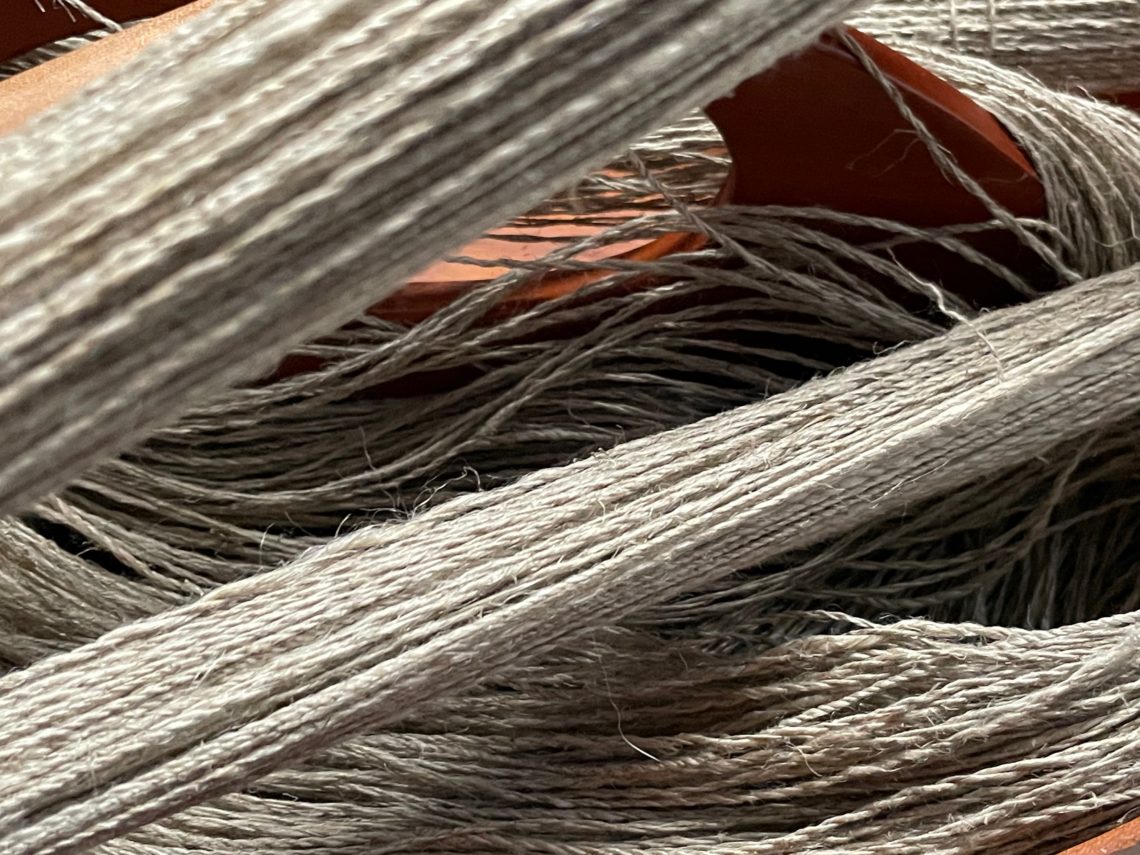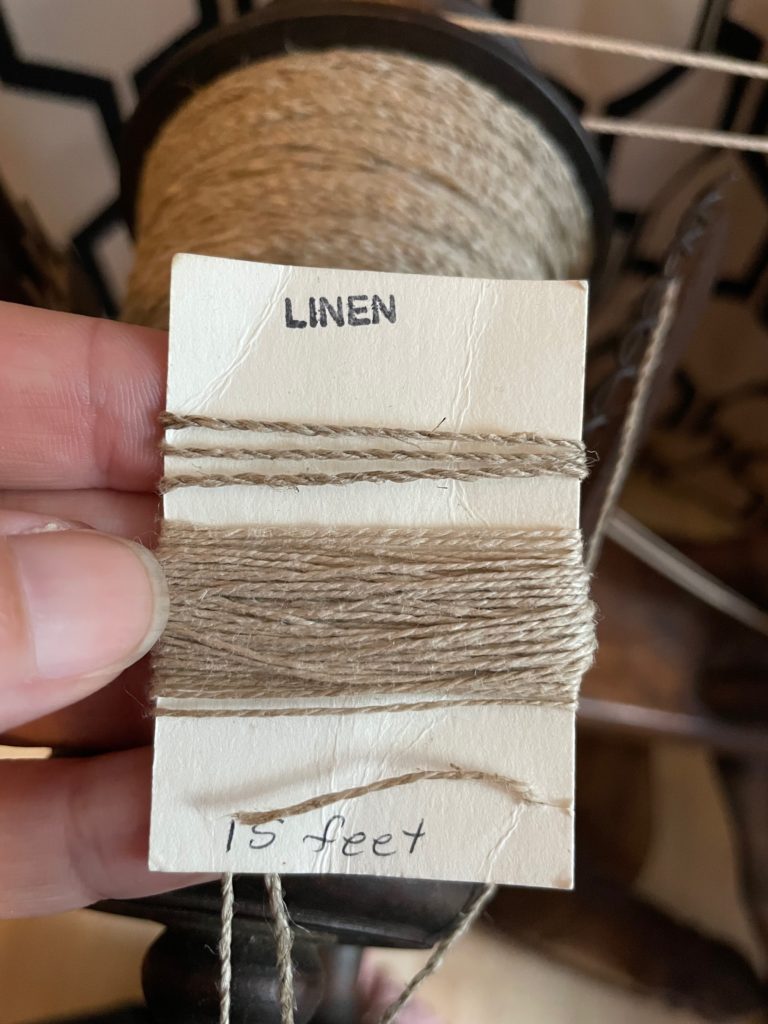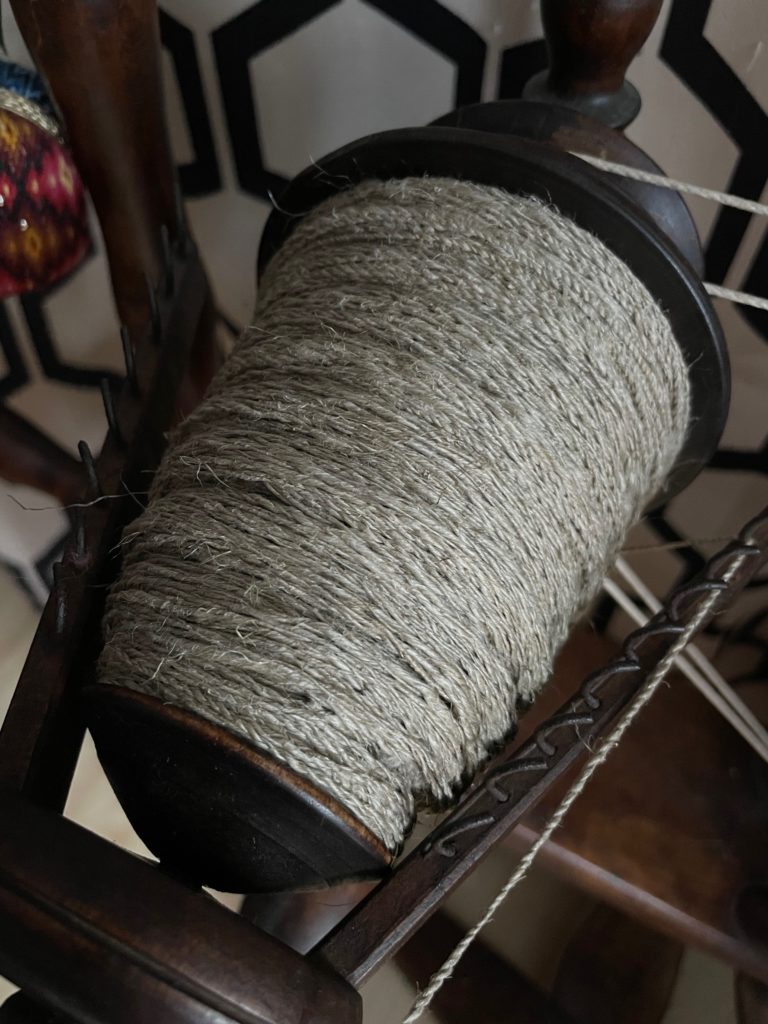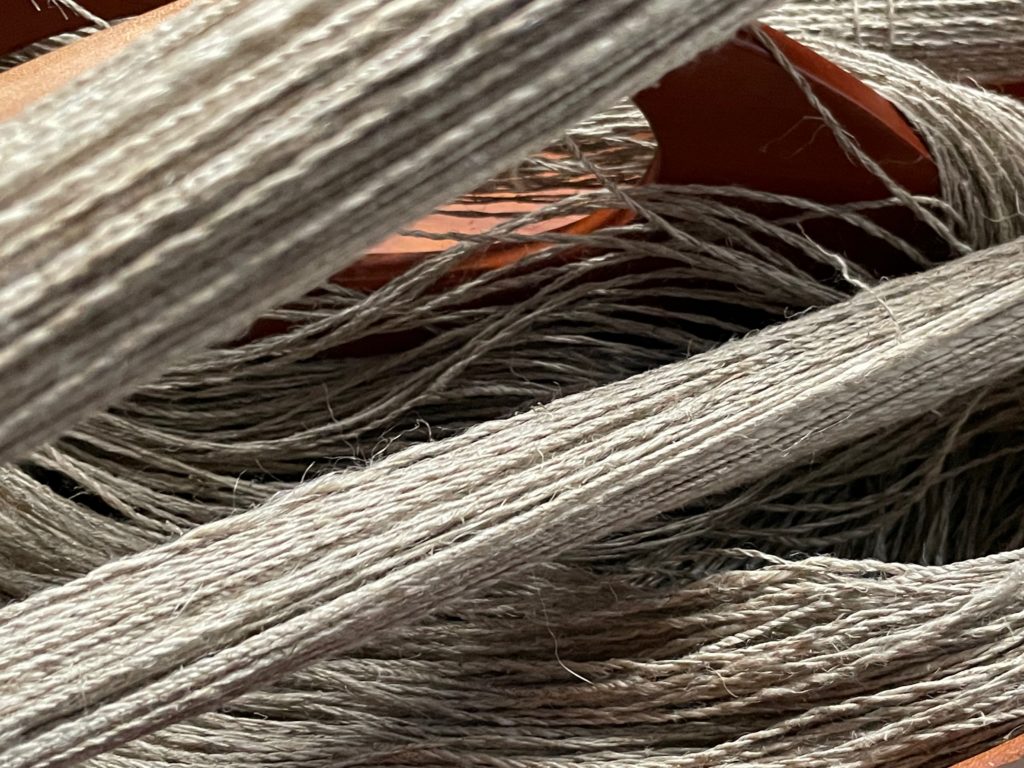
Dropping a Line
At the beginning of September, I got an email asking if I could spin linen fishing line. I’ve been spinning linen thread/yarn, so from a technical perspective, it wouldn’t be too different. The site that was requesting it had a bamboo fishing pole event scheduled for the end of the month. Folks could stop by and try their hand at fishing with 19th century style fishing poles and hooks.
I asked for a sample that I should try to match, how much they were looking for, and a deadline. I had about 300g of unbleached flax top on hand, so I wasn’t terribly worried about having the necessary supplies. This ended up being a good thing – they were looking for 500 yards of two-ply fishing line for an event on September 25. They needed some for the event, and some for backup when lines break, with about 15 feet used for each pole. In order to get the fishing line to them ahead of the event, I figured it would be about a 2.5 week turn around. Tight, given that I have a day job, so I told them I’d be able to get them at least 250 yards in time for their event.

I decided I’d go ahead and wet spin the singles. I started with about 75g I had left from a previous 250g bag of flax top from The Woolery. It had been my ‘event flax’, and I’d spun up various amounts of it over time. Rather than dividing the 75g in half, I spun it up and then wound it off into a center pull ball. I’ve plied from both ends of a ball before, so figured it would work with flax about as well as it does for wool. Turns out I was wrong – especially with trying to wet ply it as well. It kept getting tangled around itself, and the wet flax was very hard to manage. I gave up on wet plying pretty quickly, and fought to untangle the end (well, middle) of the ball. That yielded about 98 yards over the course of about 6 hours.
When I opened the second 250g bag of flax top, I decided to divide what I had in half so that I’d have two separate balls to ply with. The top was packaged as one larger and one smaller section, so I decided to divide the bigger section in half for what I needed to spin. I planned to spin up both sets of singles, ply them, and see how much more spinning I needed to do to get to the 250 or 500 yard mark. Again, I wet spun the singles. I found that I got into a rhythm much faster on these singles, but I was still spending an hour or two each evening during the week to get the singles spun. I’d noticed that this second bag was a bit coarser than the first. The fibers were larger, and there was more straw and dust in it.

I finished spinning the singles about a week before the event, and got the fishing line plied at the end of the weekend. I wound the first 250 yards of plied fishing line off the bobbin, and started on the second 250 yards. I’d fit about 395 yards of fishing line on the bobbin. So with the 98 yards from my center pull ball attempt, I was just shy of the full 500 yards they’d ordered. I had some other single ply linen that I’d spun at an event, so I picked up a drop spindle and spun up the last 6 yards or so that I needed.

About 30 hours of spinning and 208g of flax top yielded 500 yards of two-ply fishing line. Even without the growing and processing time, that’s a lot of work for an afternoon of fishing.